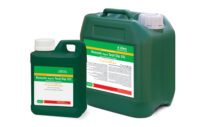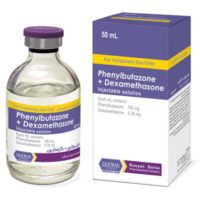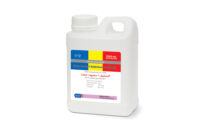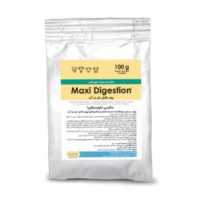
- - animals:
- - type:
- anti parasites
- - usage:
- injectable sterile solution
- - manufacturer:
- Rooyan Darou
- - Packaging:
- 50 & 100 ml vials
Product properties
Composition
Each ml contains 50 mg Buparvaquone.
Mechanism of Action:
Buparvaquone is a hydroxynaphtoquinone and an analogue of parvaquone but its activity in the body is 8 times more than Parvaquone.
It inhibits electron transfer in mitochondria within respiratory chain of theileria resulting in parasite death.
This mechanism normally cannot stop infection completely and the disease lasts in subclinical form.
It is well absorbed and distributed in body after intramuscular injection. Half life is 26 hours and 44 minutes. Blood level downfall is gradual and slow.
Indications of use
Buparvaquone is used for treatment of all forms of cattle theileriosis as follows:
– Theileriosis of north Africa, Middle east, southern Europe, India, Asia and Mediterranean regions due to theileria annulata.
– Theileriosis of east Africa (East coast fever) due to theileria parva.
– Buparvaquone causes schizonts (Parasite form inside lymphoid cells) and theilerial piroplasma (inside red blood cells) death.
Theileriosis is basically a common disease of tropical areas and its causative agent
is various species of thileria. It is transmitted to livestock via ticks.
The causative agent in Iran is Theileria annulata.
Dosage and route of administration
2.5 mg of Buparvaquone per 1 kg bodyweight (1 ml of injectable solution for 20 kg bodyweight of animal). It is recommended to be used once by intramuscular route. This is sufficient in mild cases of disease but in acute and severe cases another shot can be given 48-72 hours after the first one. It is better to inject it in neck muscle as it can be better absorbed and distributed from there. If a second shot is needed it is advised
to take it at another site.
In some cases and based on veterinarian’s diagnosis it may be necessary to have injection more than twice.
Withdrawal Time
42 days after last injection for meat. Milk of cattle should not be used for human consumption during treatment and 48 hours after last injection.
Precautions
Only for intramuscular use. Intravascular injection is not allowed. Subcutaneous injection
result in weak absorption and distribution and drug efficacy will not be satisfactory.
Treated cattle should receive sufficient and suitable water and feed and environmental condition must be under control to prevent stress.
Also supplemental treatment must be considered for the relevant anemia associated with the disease.
Since disease transmission is done by ticks, tick control program should be a priority in control of theileriosis.
Storage conditions
Keep below 25º C, away from direct light.







